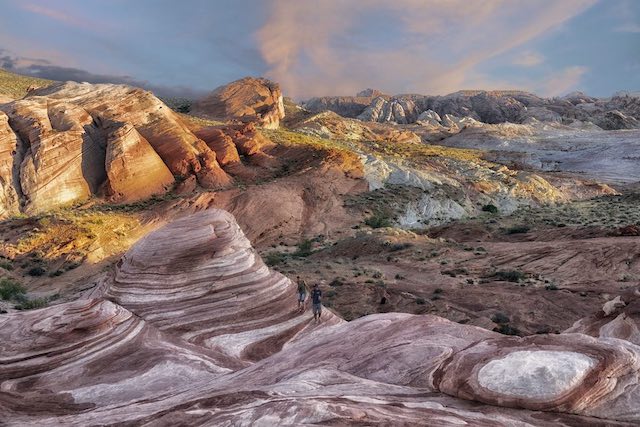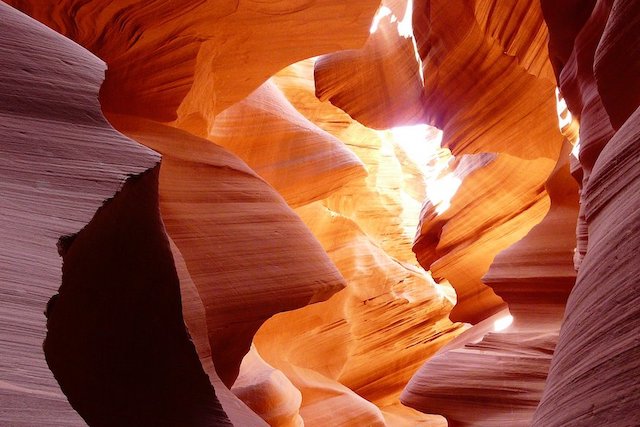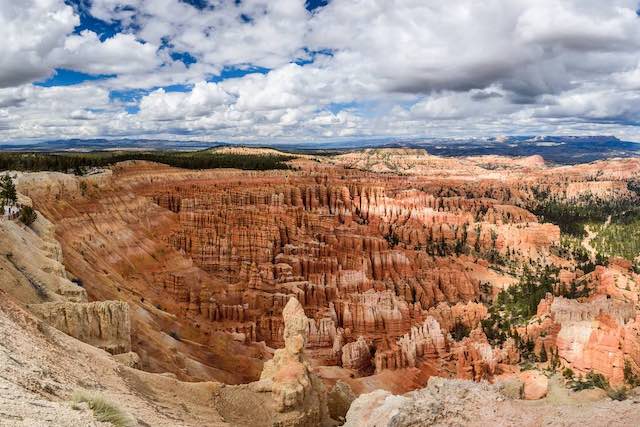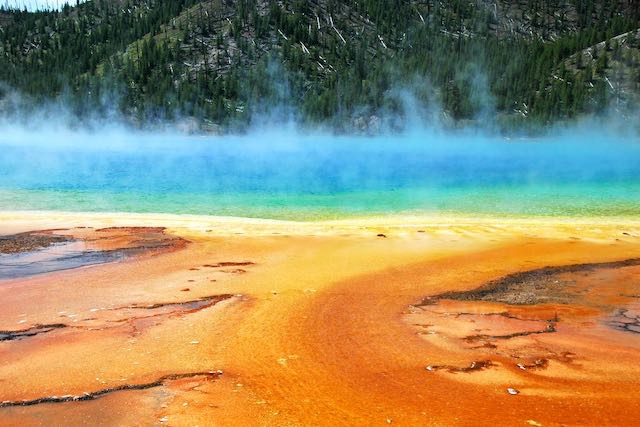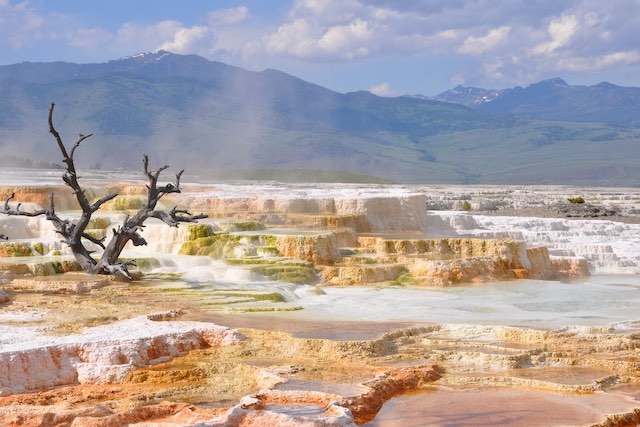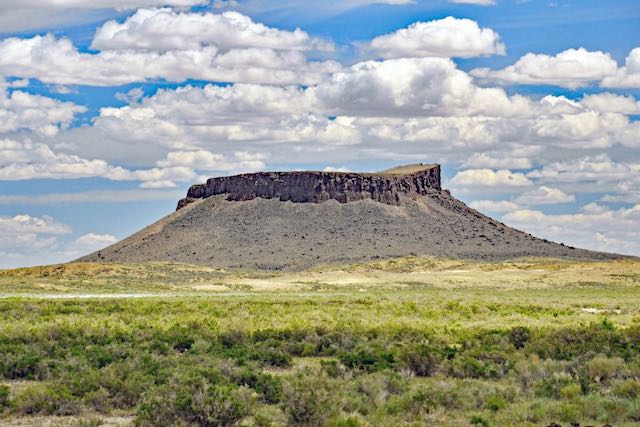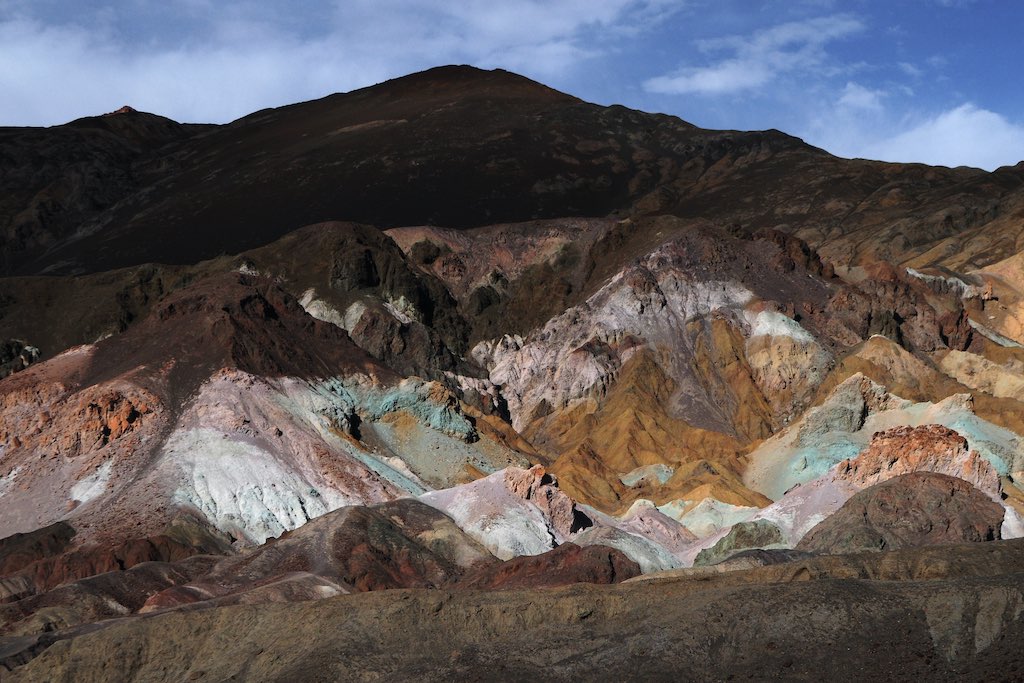
Artist’s palette of the Black Mountains
Pale purple, blue-green, ochre, white, red, orange, brown, and black. These colorful mountains are the Black Mountains, which form the northeastern slopes of Death Valley in California, USA. As the name suggests, the mountains are black in color, but some parts of the slopes have vivid colors that look as if they have been painted with paint, giving them the name “artist’s palette”.
Of course, it is not an artificially painted color, but a naturally formed one. In the Black Mountains, a volcanic area, hot groundwater (hydrothermal water) from the volcanoes acted on the stratum formed by the volcanic ejecta, concentrating various metallic elements, and in addition, the rocks that make up the stratum were chemically altered by the hydrothermal water, resulting in this variety of colors. In addition, weathering caused by rainwater is also thought to play a role. It’s quite a complicated process, isn’t it?
For the typical colors, the chemical changes of metallic elements or minerals that are thought to be the cause of the coloring are known, and are generally as follows. The blue-green color that we first see in geological formations is caused by chemical changes in mica, a mineral contained in volcanic ash, due to weathering, which has turned into another mineral called clay mineral. It has a vivid color, like mint green. The white part is also basically due to the chemical change of the mineral.
Light purple is the color of concentrated manganese. The red and yellow colors (red, ochre, orange, brown, light pink, etc.) are caused by iron compounds. In addition to Death Valley, iron compounds cause coloration in many other geological formations, and there are many variations of iron compounds, such as oxides, hydroxides, and non-crystalline ones.
In addition, another mineral called borax is formed by the action of hydrothermal fluids. Borax is a mineral composed of sodium and boron, and is used in the production of boron.
The original rocks of the artist’s palette
This is how the strata of the Black Mountains were transformed into an artist’s palette through hydrothermal action and weathering, but the original rocks were black volcanic ejecta.
Volcanic activity occurred from about 12 to 4 million years ago, and erupted basaltic lava, scoria, and volcanic ash accumulated to form the strata of the Black Mountains. In addition to volcanic eruptions, there are also gravel formations that look like they have been cemented together, and formations formed by puddles of water where minerals are concentrated by evaporation. These formations that make up the Black Mountains (called the Artist Drive Formation) are very thick, estimated to be about 1,500 meters.
The Death Valley area, which includes the Black Mountains, is composed of very old bedrock that is 1.7 billion years old, and relatively new strata, such as the volcanic ejecta of the Black Mountains, are on top of it.
Death Valley is a valley widened by fault movement
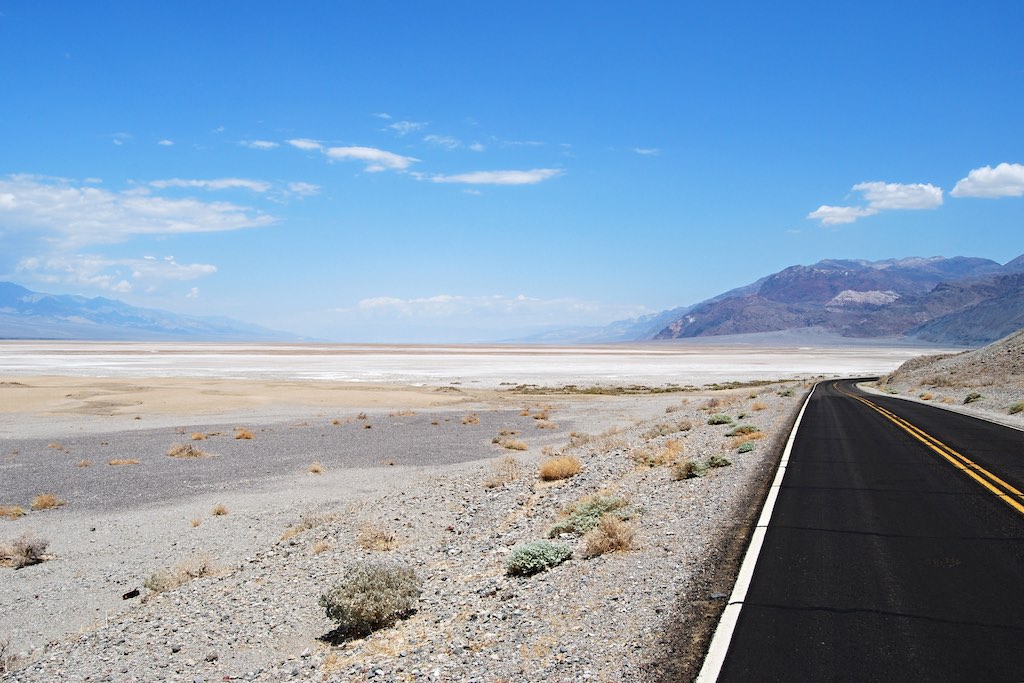
Death Valley is the literal translation of “Valley of Death”. It was named after a group of people who wandered into the valley in search of gold during the gold rush era and miraculously survived, but even for visitors in this day and age, the intense heat and dryness are harsh conditions worthy of “Death Valley”.
In fact, Death Valley is one of the hottest places in the world. The temperature in Death Valley usually exceeds 38 degrees Celsius from mid-May to early October every year, and the World Meteorological Organization (WMO), a specialized agency of the United Nations, has recognized the temperature of 56.7 degrees Celsius recorded in Death Valley on July 10, 1913 as the world’s highest temperature. Although the average annual precipitation is only 50 millimeters, it is a dangerous place where flash floods and mudslides occur in dry rivers when it rains in large amounts.
Now, let me tell you what the “Death Valley” looks like. This place is a dried up salt lake at the bottom of Death Valley, and its name is “Badwater”. There are no rivers flowing through the valley floor, because the rivers flowing into Death Valley are sucked into the dry sand and disappear.
The elevation of the valley floor is much lower than sea level, and the lowest point is a whopping 86 meters below sea level. The Sierra Nevada Mountains are located to the west of Death Valley, and this area is mountainous, so it is somewhat surprising that the elevation is below sea level. However, when you learn about the formation process of Death Valley, you can understand why the land is so low.
Death Valley is a valley that stretches from northwest to southeast, and is about 225 kilometers long. And there is a fault line in the middle of the valley.
About 3 million years ago, this fault began to move horizontally, and a valley formed at the location of Death Valley. The movement of the fault continued, and the valley floor gradually expanded. As a result, the central part of the valley floor sank.
Even now, the fault continues to move, and the valley floor is gradually becoming wider.
References
Katsuaki Watanabe (2020) Utsukushisugiru chigaku Jiten (Handbook of the Most Beautiful Geological Wonders), Tokyo: Shuwa System [published in Japanese].
Location
Translated with www.DeepL.com/Translator (free version)

